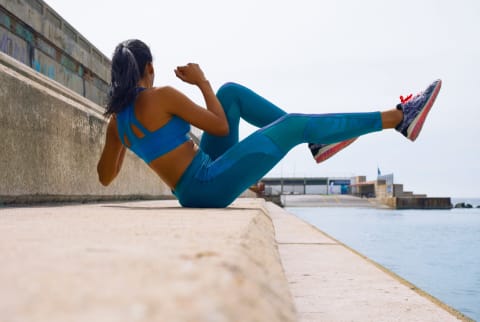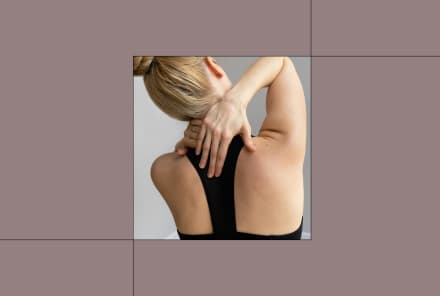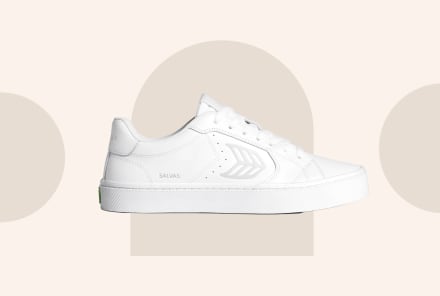Advertisement
2 Ways To Build A Stronger Core, According To Science


When it comes to fitness, simply moving your body should be at the top of your priority list. And while getting your blood pumping and your heart racing will make you feel empowered and energized, sometimes you just want to look in the mirror and feel that same sense of achievement. A lean midsection is a hallmark of physical fitness. For many people, it’s one of their primary goals when embarking on a new fitness regimen. Here are two takeaways you need to build strong abs.
1. Diet over everything.
You’ve heard this one numerous times, and I’m sure you’re pretty tired of it by now, but: Abs are made in the kitchen. While you may find this advice obnoxious, it’s also rooted in fact. You know by now that spot-reducing fat in targeted areas of your body is impossible. So while you may think that set of crunches is "burning the fat in my stomach," it’s burning just as much in your legs, your arms, even your face.
Think of it this way: Your abs are big, heavy concrete boulders sitting in a tub and covered in water (body fat). The goal is, of course, to get them to peek out above the surface of the water. Now, what sounds like the easier way to do that? Hoist more boulders in the tub and try to pile them as high as you can, or simply scoop out the water? Unless you have a penchant for strenuous physical labor, I think you know the answer.
There’s also a common misconception that people feel they have "underdeveloped" lower abs, but that is usually not the case. In reality, they’re probably just as developed as your upper abs. The problem is that most people tend to carry more body fat in the lower part of their torso. So while you may think that doing exercises that target your lower abs is the key, you should actually focus more on reducing body fat in general.
2. You need to add resistance.
Your abs, after all, are muscles. And just like your biceps or your legs, they need resistance to get them to develop. Yes, the primary function of your ab muscles is to flex the spine like in a situp, but that’s kind of like lifting your arms in the air a bunch of times and expecting to develop your arms and shoulders. So just as you’d add the resistance of dumbbells when doing an overhead press, you should also add resistance to your core movements. Studies have shown that adding weight can even result in up to 24 percent more muscle activation1.
Next time you see the CrossFit games on TV, pay attention to something. All of the competitors—though perhaps more muscular than you want to be—have considerable muscular definition in their midsections. Sometimes this results in what they call a "tortoiseshell stomach" (with the abs protruding outward), and while this may not be your goal, the end result is the same: well-developed abdominal muscles. And you can bet they didn’t get them from countless sets of bodyweight crunches; they got them from heavy, compound movements that engaged all four planes of the abdominal muscles.
What does this mean for your next workout? Like most muscles, your abs are a nearly 50/50 split of type I and type II muscle fibers. So to stimulate them effectively, you should perform a combination of low-rep (8 to 12) and high-rep (15 to 30) exercises. And when picking exactly which exercises to do, it’s been shown that ab movements that incorporate other muscles like the shoulders or glutes2 engage your core more than those that don’t. This means things like weighted leg raises, chopping and twisting movements, and ab rollouts are far more effective than a crunch or situp.
So next time you plop down on the mat to do your normal ab workout, consider adding some weight, utilizing your whole body, and mixing up your routine. You'll get more bang for your buck!
All that working out can take a toll on your calves. Here's how to loosen them up.
Watch Next
Enjoy some of our favorite clips from classes
Enjoy some of our favorite clips from classes
What Is Meditation?
Mindfulness/Spirituality | Light Watkins
Box Breathing
Mindfulness/Spirituality | Gwen Dittmar
What Breathwork Can Address
Mindfulness/Spirituality | Gwen Dittmar
The 8 Limbs of Yoga - What is Asana?
Yoga | Caley Alyssa
Two Standing Postures to Open Up Tight Hips
Yoga | Caley Alyssa
How Plants Can Optimize Athletic Performance
Nutrition | Rich Roll
What to Eat Before a Workout
Nutrition | Rich Roll
How Ayurveda Helps Us Navigate Modern Life
Nutrition | Sahara Rose
Messages About Love & Relationships
Love & Relationships | Esther Perel
Love Languages
Love & Relationships | Esther Perel











